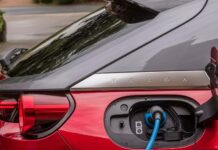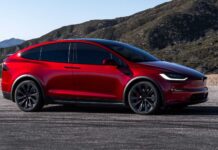[ad_1]
Last month’s “Run on Less” event organized by the North American Council for Freight Efficiency (NACFE) proved a real success for the Tesla Semi, full data released by the organization shows.
Tesla‘s all-electric Class 8 truck demonstrated its range and charging efficiency advantages compared with competitors from established truck makers such as Freightliner and Volvo.
“Tesla is the leader in terms of performance and range,” John Boesel, CEO of Calstart, a clean transportation industry organization, told Automotive News, citing early data. “They are also the only ones demonstrating superfast charge capability.”
For more than two weeks, the trucking research group tracked information on a series of metrics as 22 trucks traveled across North America fulfilling actual orders. Data covered the charging infrastructure, charge management, truck performance, cost of ownership, and other metrics.
Tesla Semi trucks operated by PepsiCo covered more miles per day on average than any other vehicle across the length of the Run on Less event. Data collected during the event showed the Semi can travel about 400 miles and then recharge to about 80 percent state of charge in 45 minutes.
PepsiCo’s best-performing Tesla Semi covered an average of about 574 miles per day over the course of the 18 days. The next non-Tesla vehicle was WattEV’s Nikola Tre BEV with an average of about 255 miles per day, followed by OK Produce’s Freightliner eCascadia with an average of about 181 miles and Performance Team’s Volvo VNR Electric with an average of about 175 miles.
One PepsiCo Tesla Semi traveled 1,076 miles in a single day with three fast-charging stints at 750-kilowatt chargers that brought the battery charge to about 47 percent, then 89 percent, and then 52 percent.
PepsiCo said 60 percent of the miles driven over the 18 days of the event were with a gross vehicle weight of more than 72,000 pounds. That’s a weight typical of the logistics industry and it’s pretty close to the 82,000-pound limit for zero-emission semi tractor-trailer combos.
Perhaps the most important takeaway from the event was electric trucks’ ability to match the operations of their diesel counterparts. Drivers operating from several depots successfully used chargers throughout each day, helping dispel myths about trucking battery range. Almost half of the trucks were using “second charge events” during the shifts, including Tesla.
While the Semi’s performance during the Run on Less event is good news, Tesla has only produced the Semi in small numbers – 60-70 according to Tesla’s Senior Manager of Semi-Truck Engineering Dan Priestley. Production would have to see a dramatic ramp-up to match established truck makers.
[ad_2]
Source link
















